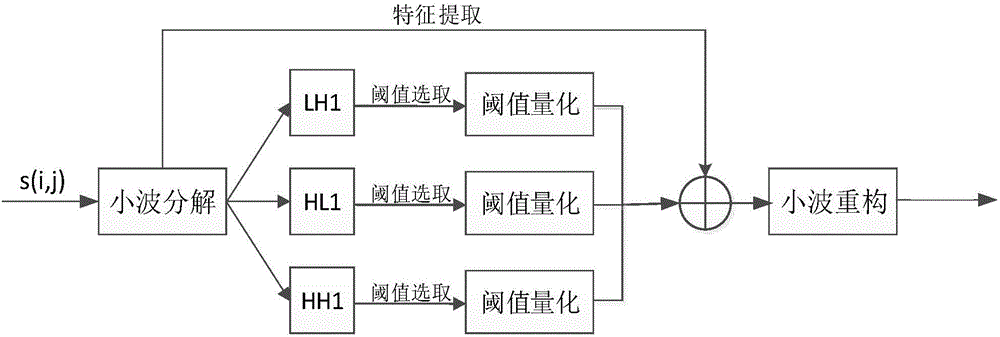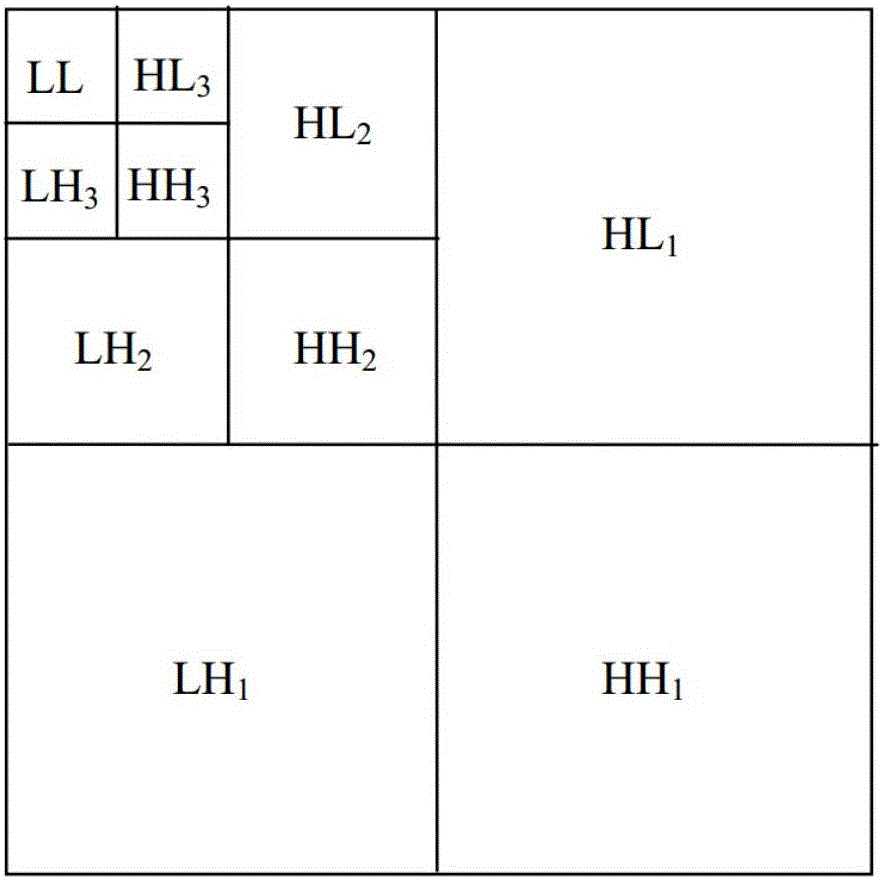Self-adaptive wavelet threshold image de-noising algorithm and device
A wavelet threshold and self-adaptive technology, applied in the field of image denoising, can solve the problems of strangling high-energy signals and affecting the effect of noise reduction
- Summary
- Abstract
- Description
- Claims
- Application Information
AI Technical Summary
Problems solved by technology
Method used
Image
Examples
Embodiment 1
[0072] Such as figure 1 As shown, this embodiment discloses an adaptive wavelet threshold image denoising algorithm, comprising the following steps:
[0073] S1. Perform wavelet decomposition on the image signal: select an appropriate wavelet and set the highest level N of decomposition, and calculate the wavelet coefficients of the image signal s(i, j) at each level;
[0074] S11, such as figure 2 As shown, the noise-containing image is subjected to 3-layer wavelet transform, and after decomposition, low-frequency coefficients and high-frequency coefficients whose directions are horizontal, vertical, and diagonal are generated. The energy of the signal and the important feature information of the image are mainly concentrated in the low-frequency smooth component LL superior.
[0075] S12, according to the wavelet coefficients of each layer obtained in step S11, considering its signal correlation, the coefficients in the adjacent regions of each coefficient are averaged: ...
Embodiment 2
[0109] Such as Figure 4 As shown, this embodiment discloses an adaptive wavelet threshold image denoising device, the device includes the following modules:
[0110] The wavelet decomposition module is used to carry out wavelet decomposition to the image signal, select the appropriate wavelet and set the highest level N of decomposition, and calculate the wavelet coefficients of the noisy image signal s (i, j) in each layer;
[0111] The wavelet coefficient module is used for the threshold value processing of wavelet coefficients. The appropriate threshold value is determined in each layer and direction of wavelet decomposition, and the appropriate threshold value function is used to process the detail wavelet coefficients of each layer, so as to retain the wavelet coefficient of the image signal as much as possible. Principle, make the wavelet coefficient of the noise zero;
[0112] The image reconstruction module is used to reconstruct the image signal, and reconstructs the ...
PUM
 Login to View More
Login to View More Abstract
Description
Claims
Application Information
 Login to View More
Login to View More - R&D
- Intellectual Property
- Life Sciences
- Materials
- Tech Scout
- Unparalleled Data Quality
- Higher Quality Content
- 60% Fewer Hallucinations
Browse by: Latest US Patents, China's latest patents, Technical Efficacy Thesaurus, Application Domain, Technology Topic, Popular Technical Reports.
© 2025 PatSnap. All rights reserved.Legal|Privacy policy|Modern Slavery Act Transparency Statement|Sitemap|About US| Contact US: help@patsnap.com



